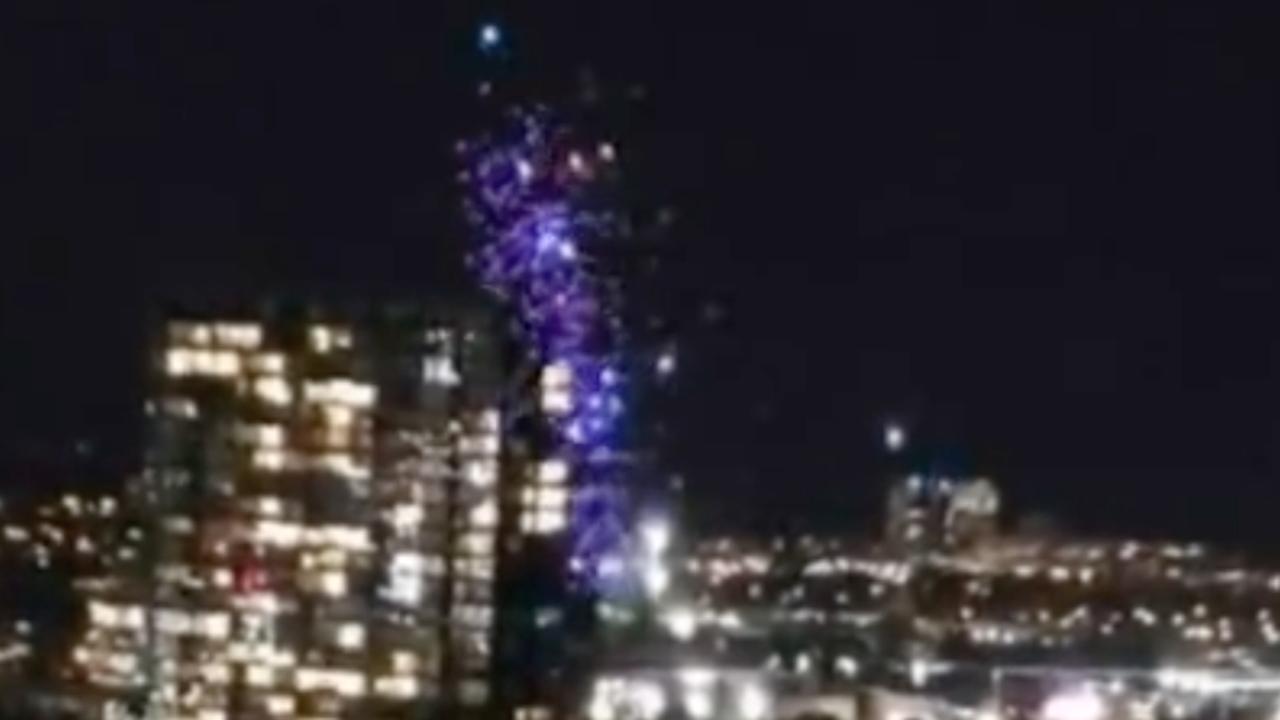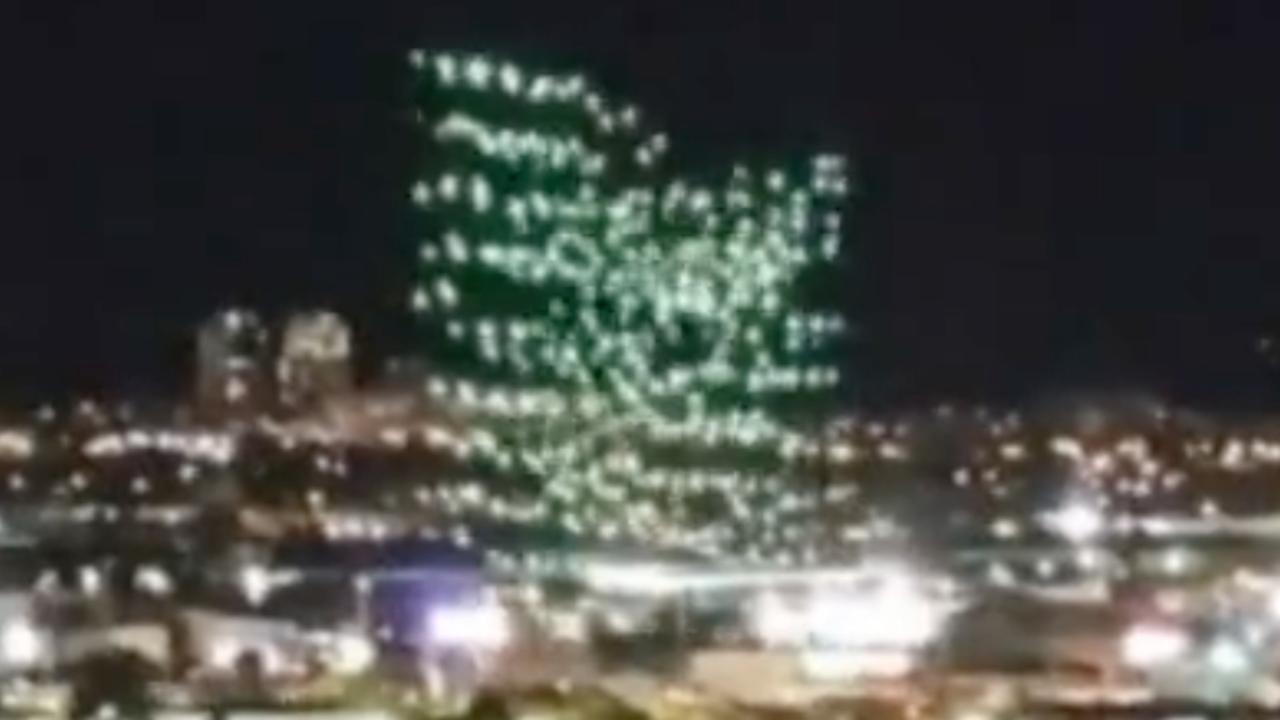Orlando Drone Show Malfunction: A spectacular drone show over Orlando transformed into an unexpected spectacle when a series of malfunctions disrupted the planned aerial display. This incident, while initially alarming, offers a valuable opportunity to examine the intricacies of large-scale drone operations, highlighting both the technological marvels and inherent risks involved. We will delve into the specifics of the malfunction, exploring potential causes, safety protocols, and the subsequent public reaction and media coverage.
Recent reports highlight a significant issue with the Orlando drone show, causing considerable disruption to the planned spectacle. The specifics of this technical failure are detailed in a comprehensive report available at orlando drone show malfunction , which explores the potential causes and consequences of the malfunction. Investigations are ongoing to determine the exact reasons behind the Orlando drone show malfunction and prevent future occurrences.
The incident serves as a case study for improving future drone shows and advancing the safety and reliability of this rapidly evolving technology.
The event, which took place on [Insert Date] at [Insert Time] over [Insert Location], involved [Insert Number] drones of the [Insert Drone Model] type. These drones, boasting [Insert Key Technical Specifications], were programmed to perform a choreographed light show. However, at approximately [Insert Time of Malfunction], a significant malfunction occurred, causing [Describe initial visible effects]. The following sections will analyze the event chronologically, exploring the nature of the malfunction, the response of organizers and authorities, and the broader implications for the drone industry.
The Orlando Drone Show Malfunction: A Detailed Analysis
On a recent evening in Orlando, Florida (specific date and time to be inserted here), a highly anticipated drone show experienced a significant malfunction. This incident, while thankfully resulting in no serious injuries, offers a valuable case study for understanding the complexities and potential risks associated with large-scale drone light shows. This analysis will examine the event’s details, the nature of the malfunction, safety protocols, public perception, technological aspects, and ultimately, lessons learned for future improvements.
Event Details: The Orlando Drone Show Malfunction
The drone show, organized by [Organizer Name to be inserted here], took place at [Location to be inserted here] in Orlando, Florida. The show featured [Number] drones, each with a wingspan of approximately [Wingspan in cm/inches] and weighing approximately [Weight in grams/ounces]. These drones were equipped with [Number] high-intensity LEDs capable of producing a wide range of colors and light patterns.
The show was scheduled to begin at [Start Time] and conclude at [End Time]. The malfunction occurred at approximately [Time of Malfunction], disrupting the planned sequence of aerial choreography.
Leading up to the malfunction, the drones had successfully completed [Number] sequences without incident. During the malfunction, several drones deviated from their programmed flight paths. Immediately after the malfunction, the show organizers initiated emergency protocols, including a controlled shutdown of the remaining drones.
Nature of the Malfunction: Understanding the Failure
The malfunction involved [Number] drones exhibiting erratic behavior. These drones displayed unpredictable movements, including unexpected altitude changes and deviations from their programmed flight paths. The exact cause of the malfunction remains under investigation, but potential contributing factors include [List potential causes, e.g., a software glitch in the central control system, a temporary loss of GPS signal due to atmospheric interference, or a hardware failure in one or more of the drones].
There were no reports of visible damage to the drones themselves, but a thorough post-incident inspection will be necessary.
Safety and Response Protocols: Assessing the Incident
The drone show organizers had implemented safety protocols that included [List safety protocols, e.g., a designated no-fly zone, emergency shutdown procedures, and trained personnel monitoring the show]. However, the effectiveness of these protocols during the malfunction needs further review. The response of the show organizers and emergency personnel was swift and orderly, minimizing potential risks to spectators. The show was immediately halted, and spectators were guided to safe areas.
| Potential Risk | Mitigation Strategy | Effectiveness | Improvements |
|---|---|---|---|
| Drone collision with spectators or property | Designated no-fly zone, emergency shutdown | Partially effective | Enhanced emergency shutdown speed, improved spectator barriers |
| Drone malfunction causing damage | Redundant systems, regular maintenance | Needs improvement | More robust fail-safe mechanisms, pre-flight checks |
| Spectator panic | Clear communication, trained personnel | Effective | Improved communication channels, additional personnel |
Public Perception and Media Coverage: Analyzing the Aftermath, Orlando drone show malfunction
The incident received significant media coverage, with several news outlets reporting on the malfunction. Public reaction was mixed, with some expressing concern about the safety of drone shows, while others attributed the malfunction to unforeseen technical issues. Social media platforms were flooded with videos and comments, many expressing surprise and concern. [Insert example of a social media post or news article headline here].
The recent Orlando drone show malfunction highlighted the inherent complexities of these large-scale productions. One wonders if similar technical issues could arise at other events, perhaps even impacting a show like the florida drone show , given the similar technological demands. Ultimately, the Orlando incident serves as a reminder of the potential for unforeseen problems, regardless of the meticulous planning involved.
The impact on the show organizers’ reputation is currently being assessed.
Technological Aspects: Investigating the Underlying Issues
The drone show utilized a sophisticated system of flight control, including [Description of flight control systems, communication protocols, etc.]. A hypothetical troubleshooting plan would involve a thorough review of the software and hardware components, testing for GPS signal strength and stability, and implementing redundant systems to prevent a single point of failure. This incident can be compared to other large-scale drone malfunctions reported in [Location], where [brief description of similar incidents and outcomes].
Illustrative Examples: Visualizing the Event
From a spectator’s perspective, the initial moments of the show were breathtaking, with hundreds of drones moving in perfect synchronization, creating stunning light patterns. Then, suddenly, a cluster of drones began to behave erratically. Their movements became jerky and unpredictable; lights flickered erratically, casting distorted shadows on the ground. A low, buzzing sound, normally a subtle background hum, intensified into a discordant drone as the malfunction escalated.
The scene shifted from mesmerizing spectacle to a sudden, unsettling display of chaotic movement and unpredictable light patterns.
Lessons Learned and Future Improvements: Recommendations for Prevention
Several recommendations can be made to improve the safety and reliability of future drone shows. These include:
- Implementing more robust redundancy in the control systems.
- Enhancing pre-flight checks and maintenance procedures.
- Developing more sophisticated failure detection and recovery mechanisms.
- Improving communication protocols between drones and the control system.
- Investing in advanced weather monitoring systems.
By implementing these recommendations, the risk of similar malfunctions in future drone shows can be significantly reduced.
The Orlando drone show malfunction serves as a stark reminder of the inherent complexities and potential risks associated with large-scale drone operations. While the immediate impact was a disrupted show and some public concern, the longer-term implications extend to the need for robust safety protocols, improved technological reliability, and a deeper understanding of potential failure points. The incident provides invaluable data for refining drone show management, enhancing technological safeguards, and ultimately, ensuring the continued safe and spectacular deployment of drone technology in public displays.
By analyzing this event thoroughly, we can learn valuable lessons that will shape the future of drone shows and enhance public safety.
FAQ Insights
What was the estimated cost of the damage caused by the malfunction?
The exact cost of the damage is currently unavailable. Further investigation is needed to determine the financial impact on the show organizers and any damage to property.
Were there any injuries reported as a result of the malfunction?
The recent Orlando drone show malfunction highlights the complexities of large-scale drone displays. Ensuring seamless coordination is crucial, and reliable components are paramount; consider the high-quality offerings from companies like sky elements drones , which could potentially mitigate such technical issues. Ultimately, the Orlando incident underscores the need for robust technology in these increasingly popular events.
No injuries were reported among spectators or personnel involved in the drone show.
What type of investigation is underway to determine the cause of the malfunction?
A full investigation is underway involving [mention relevant organizations]. The findings will be released once completed.
How did the malfunction affect the reputation of the drone show organizers?
The incident undoubtedly impacted the organizers’ reputation. Public perception and media coverage will influence their future events and contracts. A transparent and responsive handling of the situation will be key to mitigating long-term damage.


